Showing Spotlights 49 - 56 of 547 in category All (newest first):
 Researchers have developed an optothermal platform with five manipulation modes - printing, tweezing, rotating, rolling, and shooting - using a single Gaussian laser beam. Switching between the different modes is achieved by simply tuning the optical power or the distance between laser and object, and can be automated through software programming. This novel multimodal manipulation technique relies on the coordination of multiple thermal forces instead of light-matter interactions, i.e., the mechanism of traditional optical tweezers.
Researchers have developed an optothermal platform with five manipulation modes - printing, tweezing, rotating, rolling, and shooting - using a single Gaussian laser beam. Switching between the different modes is achieved by simply tuning the optical power or the distance between laser and object, and can be automated through software programming. This novel multimodal manipulation technique relies on the coordination of multiple thermal forces instead of light-matter interactions, i.e., the mechanism of traditional optical tweezers.
Jul 25th, 2022
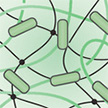 Inspired by living biological systems, which can sense, process information, and actuate in response to changing environmental conditions, researchers are exploring engineered living hydrogels. The convergence of engineering, biology, and materials science over the past 20 years is providing unprecedented opportunities to integrate living cells into these hydrogels. This integration yields engineered living hydrogels with the capabilities of self-replication, self-regulation, and environmental responsiveness.
Inspired by living biological systems, which can sense, process information, and actuate in response to changing environmental conditions, researchers are exploring engineered living hydrogels. The convergence of engineering, biology, and materials science over the past 20 years is providing unprecedented opportunities to integrate living cells into these hydrogels. This integration yields engineered living hydrogels with the capabilities of self-replication, self-regulation, and environmental responsiveness.
Jul 11th, 2022
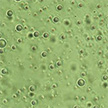 Spontaneous charging of interfaces between water and hydrophobic media is a mysterious feature whose nature and origin - despite many efforts to explain them - are still not fully understood. Many spectroscopic results and interpretations along with computational work are not consistent with one another and a consensus on the nature and origin of interfacial charging has not been reached. A clear understanding of this puzzling phenomenon needs a variety of approaches from diverse perspectives, which, hopefully will all add up and be pieced together towards a complete description of the full picture.
Spontaneous charging of interfaces between water and hydrophobic media is a mysterious feature whose nature and origin - despite many efforts to explain them - are still not fully understood. Many spectroscopic results and interpretations along with computational work are not consistent with one another and a consensus on the nature and origin of interfacial charging has not been reached. A clear understanding of this puzzling phenomenon needs a variety of approaches from diverse perspectives, which, hopefully will all add up and be pieced together towards a complete description of the full picture.
Jul 7th, 2022
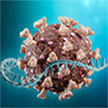 The success of mRNA technology in the development of a COVID-19 vaccine has become a groundbreaking development in the fight against cancer, as well as in the development of new vaccines against many other infectious diseases, including HIV. Future nanotechnology-based mRNA vaccines could allow the delivery of multiple antigen-targeted vaccines in one vaccine lipid nanoparticle to protect against multiple diseases, thereby reducing the number of vaccines needed to prevent common vaccine-preventable diseases.
The success of mRNA technology in the development of a COVID-19 vaccine has become a groundbreaking development in the fight against cancer, as well as in the development of new vaccines against many other infectious diseases, including HIV. Future nanotechnology-based mRNA vaccines could allow the delivery of multiple antigen-targeted vaccines in one vaccine lipid nanoparticle to protect against multiple diseases, thereby reducing the number of vaccines needed to prevent common vaccine-preventable diseases.
Jul 5th, 2022
 The controlled rotation of micro- and nanoscale objects plays a crucial role in sensing, imaging, biomedicine, and manufacturing. What makes light-driven micro- and nanorotors so promising for many applications is their non-contact, fuel-free operation. It has remained challenging for simple and low-power optics to achieve light-driven rotation of a wide range of objects, including optically symmetric synthetic particles and biological cells. A novel platform elegantly addresses this issue by achieving the rotation of various particles and live cells using an arbitrary low-power laser beam.
The controlled rotation of micro- and nanoscale objects plays a crucial role in sensing, imaging, biomedicine, and manufacturing. What makes light-driven micro- and nanorotors so promising for many applications is their non-contact, fuel-free operation. It has remained challenging for simple and low-power optics to achieve light-driven rotation of a wide range of objects, including optically symmetric synthetic particles and biological cells. A novel platform elegantly addresses this issue by achieving the rotation of various particles and live cells using an arbitrary low-power laser beam.
Jul 4th, 2022
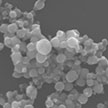 By irradiating a pure tellurium target in deionized water, researchers formed 'naked' tellurium dioxide nanoparticles with a spherical morphology and a size of around 70 nm. The surface of those nanoparticles is totally clean (hence 'naked'), meaning that it does not contain any residues from chemical reactions. This surface cleanliness makes them ideal to interact with biological pathogens and it takes less than 10 ppm to eradicate deadly pathogens like multi-drug resistant E. coli and Methicillin-resistant S. aureus.
By irradiating a pure tellurium target in deionized water, researchers formed 'naked' tellurium dioxide nanoparticles with a spherical morphology and a size of around 70 nm. The surface of those nanoparticles is totally clean (hence 'naked'), meaning that it does not contain any residues from chemical reactions. This surface cleanliness makes them ideal to interact with biological pathogens and it takes less than 10 ppm to eradicate deadly pathogens like multi-drug resistant E. coli and Methicillin-resistant S. aureus.
Jul 1st, 2022
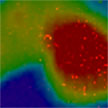 Every cell relies on the uptake (endocytosis) of materials like proteins, cytokines and even synthetic carbon nanomaterials, to perform its required cellular fate functions. Studying this process in detail is an extremely challenging and thus extremely interesting goal in biophysics. Therefore, endocytosis is of interest for bringing therapeutic targets into cells. Studying the pathways of how materials get into the cell can aid in untangling trafficking to design higher efficiency targeted drug and gene delivery therapies.
Every cell relies on the uptake (endocytosis) of materials like proteins, cytokines and even synthetic carbon nanomaterials, to perform its required cellular fate functions. Studying this process in detail is an extremely challenging and thus extremely interesting goal in biophysics. Therefore, endocytosis is of interest for bringing therapeutic targets into cells. Studying the pathways of how materials get into the cell can aid in untangling trafficking to design higher efficiency targeted drug and gene delivery therapies.
Jun 20th, 2022
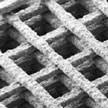 Although 4D printing is considered very promising for various biomedical applications - such as tissue scaffolds, neural scaffolds, grafts and stents, cardiac patches and valves, even bionic constructs - its broad-scale adoption for clinical use and tissue engineering purposes is complicated by a notable limitation of printable smart materials and the simplistic nature of achievable responses possible with current sources of stimulation. Nevertheless, 4D printing may offer a more favorable fabrication approach over 3D printing, as 4D constructs can respond to internal and/or external stimuli.
Although 4D printing is considered very promising for various biomedical applications - such as tissue scaffolds, neural scaffolds, grafts and stents, cardiac patches and valves, even bionic constructs - its broad-scale adoption for clinical use and tissue engineering purposes is complicated by a notable limitation of printable smart materials and the simplistic nature of achievable responses possible with current sources of stimulation. Nevertheless, 4D printing may offer a more favorable fabrication approach over 3D printing, as 4D constructs can respond to internal and/or external stimuli.
Jun 7th, 2022
 Researchers have developed an optothermal platform with five manipulation modes - printing, tweezing, rotating, rolling, and shooting - using a single Gaussian laser beam. Switching between the different modes is achieved by simply tuning the optical power or the distance between laser and object, and can be automated through software programming. This novel multimodal manipulation technique relies on the coordination of multiple thermal forces instead of light-matter interactions, i.e., the mechanism of traditional optical tweezers.
Researchers have developed an optothermal platform with five manipulation modes - printing, tweezing, rotating, rolling, and shooting - using a single Gaussian laser beam. Switching between the different modes is achieved by simply tuning the optical power or the distance between laser and object, and can be automated through software programming. This novel multimodal manipulation technique relies on the coordination of multiple thermal forces instead of light-matter interactions, i.e., the mechanism of traditional optical tweezers.
 Subscribe to our Nanotechnology Spotlight feed
Subscribe to our Nanotechnology Spotlight feed





